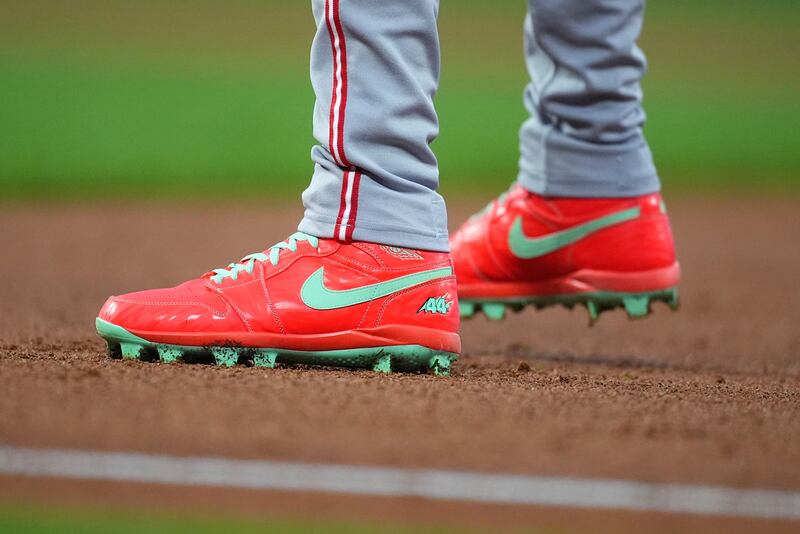- Nike reported a 12% loss in the fourth quarter, while revenue for the past year are down 10%.
- The sports apparel giant launched a new marketing strategy last year.
- Prices for some Nike gear in the U.S. increased last month and could go up again.
The iconic swoosh logo that represents the world’s largest sports apparel company has lost some air.
Nike, Inc., still maintains some of the biggest stars on the court and on the field and continues to produce the Air Jordan line, but the Beaverton, Oregon-based sneaker giant reported significant losses in its latest financial report.
- Revenues for the year ended May 31 were $46.3 billion, down 10%,
- Fourth quarter revenues were $11.1 billion, down 12%.
- NIKE Direct revenues for the fourth quarter were $4.4 billion, down 14%.
- Wholesale revenues for the fourth quarter were $6.4 billion, down 9%.
“While our financial results are in-line with our expectations, they are not where we want them to be. Moving forward, we expect our business to improve as a result of the progress we’re making through our Win Now actions,” Elliott Hill, Nike president & CEO, said in a statement.
“As we enter a new fiscal year, we are turning the page and the next step is aligning our teams to lead with sport through what we are calling the sport offense. This will accelerate our Win Now actions to reposition our business for future growth.”
New marketing strategy
Nike launched its “Win Now” marketing strategy last fall centered around five fields of play, three countries and five cities.
The fields of play are running basketball, football, training and sportswear. The countries are the United States, China and the United Kingdom, while the key cities are New York, Los Angeles, London, Beijing and Shanghai.

Matthew Friend, Nike executive vice president and CFO NIKE, said the fourth quarter reflected the largest financial impact of the company’s new strategy, “and we expect the headwinds to moderate from here.”
While the worst might be behind the company, tariffs present new challenges that might make it tougher to turn around its fortunes, per CNBC. Friend called the taxes a “new and meaningful” cost during a call with analysts Thursday.
“With the new tariff rates in place today, we estimate a gross incremental cost increase to Nike of approximately $1 billion” in its current fiscal year 2026, he said, adding the company intends to “fully mitigate” that cost over time as it adjusts its supply chain, works with its factory and retail partners and implements price increases, CNBC reported.
Did the price of Nike gear go up?
Nike announced price increases for products in the U.S. last month.
Costs on apparel and equipment for adults were to go up between $2 and $10, while items priced between $100 and $150 would see a $5 increase, the company said. Shoes costing more than $150 would increase $10, while products costing less than $100 would not see any raise in price. Nike’s Air Force 1 shoes, which cost $155, are exempt from the increase.
“The tariff impact is significant. However, I expect others in the sportswear industry will also raise prices, so Nike may not lose much share in the U.S.,” David Swartz, an analyst at Morningstar Research, told Reuters in May.
Right now, about 16% of Nike’s supply chain is in China and it expects to reduce that to the high single-digit percentage range by the end of its current fiscal year next summer, CNBC reported.
“Despite the current elevated tariffs for Chinese products imported into the United States, manufacturing capacity and capability in China remains important to our global source base,” Friend said.
The publicly traded company will consider cost cuts, he said, but its highest priority remains stabilizing its business, which requires investment.
Why is Nike revenue down?
Nike’s revenue is down due to a combination of factors including reduced consumer spending, particularly in key markets like China, inventory issues and competition.
“Nike is in the middle of a multi-year effort to reset its product mix, lean into innovation, and rebuild partnerships with wholesale distributors, all of which require steady consumer engagement,” according to The CFO, a UK-based business intelligence firm.
“Yet the environment has shifted. Inflation has cooled, but economic uncertainty persists. The question now is whether Nike’s brand strength is enough to weather the pullback, or if its growth assumptions require a recalibration.”
The company’s biggest challenge might not be economic uncertainty but competition. Domestic brands in China are gaining ground, while brands like On Running, Hoka and Lululemon are picking up market share in the U.S., “forcing Nike to play defense,” according to The CFO.
Hill has made product innovation a top priority.
“Nike remains a powerhouse in athletic apparel, but its latest struggles highlight a shifting landscape — one where brand strength alone isn’t enough," per The CFO. “Execution, adaptability, and supply chain resilience are now just as critical as product design and marketing.”


